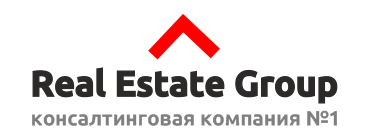Part 1: Modern Digital Strategies for the Ministry of Trade and Integration of the Republic of Kazakhstan.
Introduction.
In September 2023, Shakkaliev Arman Abayevich assumed the important role of Minister of Trade and Integration for the Republic of Kazakhstan.
As the nation navigates a rapidly evolving global economic landscape, it is essential for the Ministry to adopt modern digital strategies that can enhance trade, streamline integration efforts, and drive economic growth.
In this in-depth article, Real Estate Group will outline the Ministry of Trade and Integration's vision for digital transformation, providing 60 key tips and recommendations for Minister Shakkaliev to consider.

Section 1: Setting the Vision.
1. Develop a Digital Transformation Roadmap: Begin by creating a clear roadmap that outlines the Ministry's digital transformation journey, complete with goals, milestones, and timelines.
2. Engage Stakeholders: Involve all relevant stakeholders, including government agencies, industry leaders, and technology experts, to ensure a collaborative approach.
3. Focus on Data-Driven Decision-Making: Emphasize the importance of data analytics in trade and integration strategies.
4. Promote Innovation: Foster a culture of innovation within the Ministry, encouraging the exploration of new technologies and approaches.
5. Cybersecurity: Establish robust cybersecurity protocols to protect sensitive trade and integration data.
Section 2: Trade Facilitation.
1. Digital Trade Platforms: Invest in digital platforms that facilitate trade, making it easier for businesses to engage in cross-border commerce.
2. Customs Automation: Implement advanced customs automation systems to expedite cargo clearance and reduce trade bottlenecks.
3. E-invoicing and E-payments: Promote e-invoicing and e-payment systems to simplify financial transactions and reduce paperwork.
4. Trade Finance Digitization: Collaborate with financial institutions to digitize trade finance processes, making it easier for businesses to secure funding.
5. Blockchain for Supply Chain Transparency: Explore blockchain technology for transparent and secure supply chain management.
Section 3: Integration Efforts.
1. Digital Single Window: Create a digital single window for integration, simplifying administrative procedures for businesses.
2. E-Commerce Support: Encourage and support the growth of e-commerce to boost cross-border trade.
3. Regional Trade Agreements: Leverage digital tools to monitor and enforce regional trade agreements effectively.
4. Trade Data Sharing: Collaborate with neighboring countries to share trade data, improving cooperation and integration.
5. Cross-Border Digital Infrastructure: Invest in cross-border digital infrastructure to facilitate data exchange with neighboring nations.
Section 4: Promoting SMEs.
1. Digital Skills Training: Launch programs to enhance digital literacy among small and medium-sized enterprises (SMEs).
2. Access to Digital Markets: Provide SMEs with access to digital marketplaces and export platforms.
3. Incubators and Innovation Hubs: Establish incubators and innovation hubs to nurture tech startups within the trade and integration sector.
4. Digital Export Promotion: Develop digital marketing strategies to promote Kazakhstani SMEs in global markets.
5. Trade Information Portals: Create online portals offering trade information and resources to SMEs.
Section 5: Regulatory and Policy Framework.
1. Digital Trade Policies: Develop comprehensive digital trade policies that align with global standards.
2. Regulatory Sandbox: Establish a regulatory sandbox for testing innovative trade and integration solutions.
3. Legal Framework for Data Sharing: Ensure that laws and regulations support secure data sharing across borders.
4. Intellectual Property Protection: Strengthen intellectual property protection to encourage innovation and technology adoption.
5. International Collaboration: Collaborate with international organizations to harmonize trade and integration regulations.
Section 6: Infrastructure and Connectivity.
1. Digital Infrastructure Expansion: Invest in broadband and mobile infrastructure to ensure connectivity in remote areas.
2. Cloud Adoption: Embrace cloud technology for scalable and cost-effective data storage and processing.
3. 5G Implementation: Work towards the deployment of 5G networks to enable high-speed data transmission.
4. Smart Ports and Logistics: Implement smart port and logistics solutions to optimize trade routes and reduce costs.
5. Cross-Border Data Exchange: Establish secure data exchange channels with neighboring countries to enhance integration efforts.
This is the end of Part 1. Continue reading in Part 2 for the remaining tips and recommendations.






